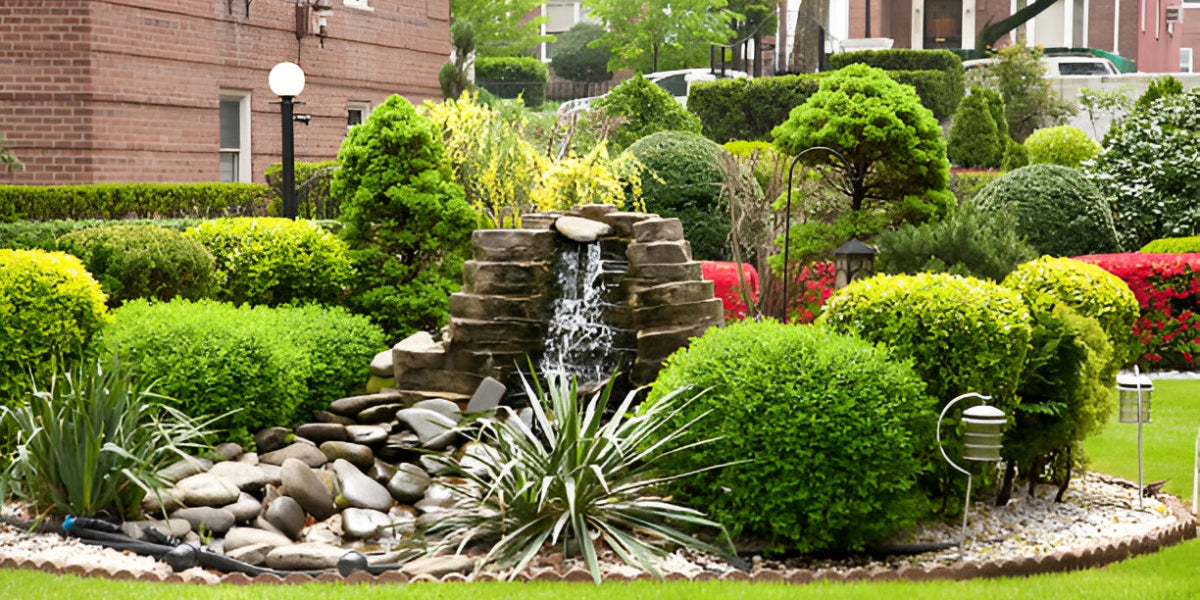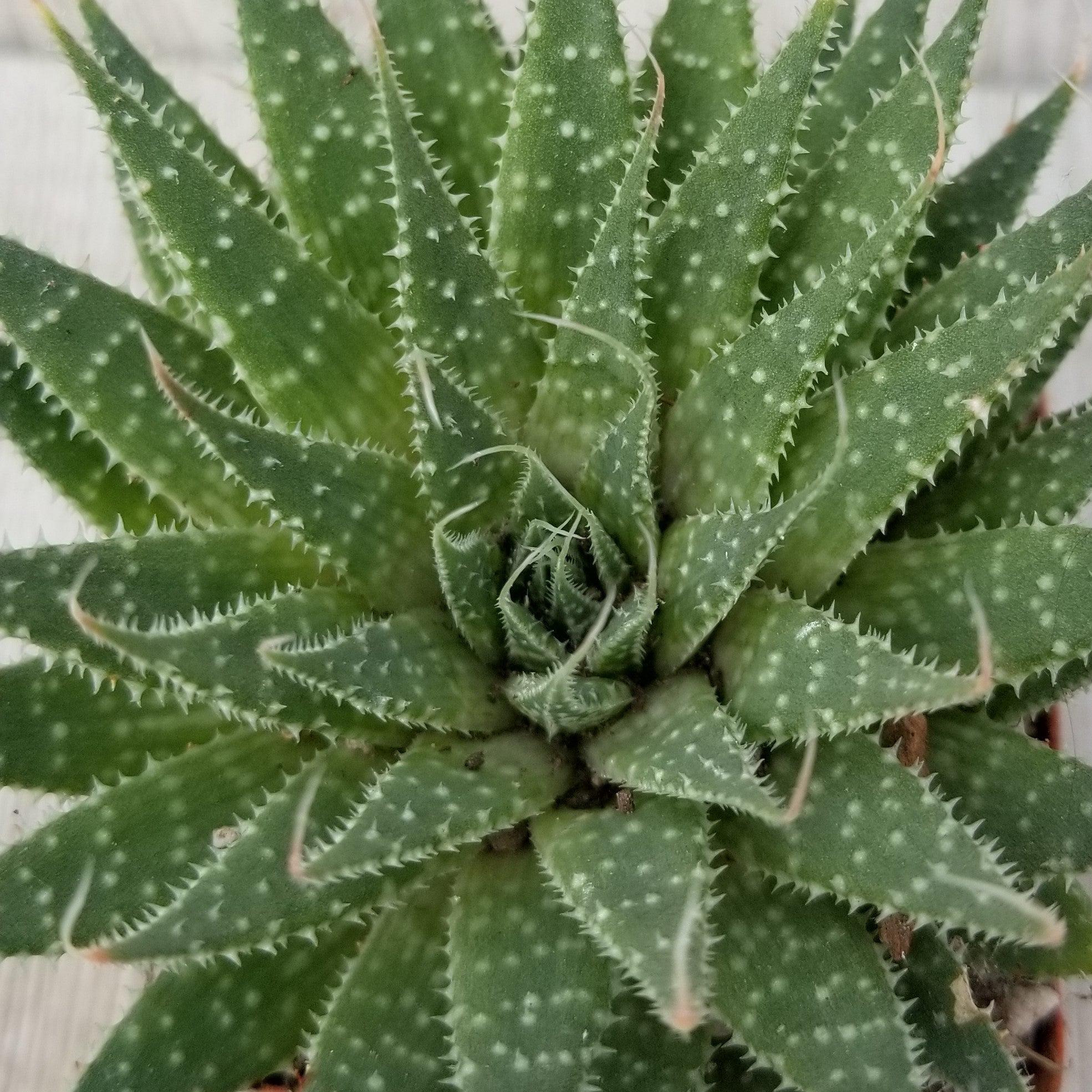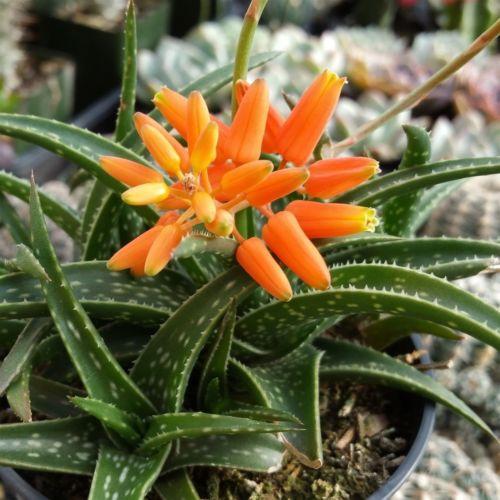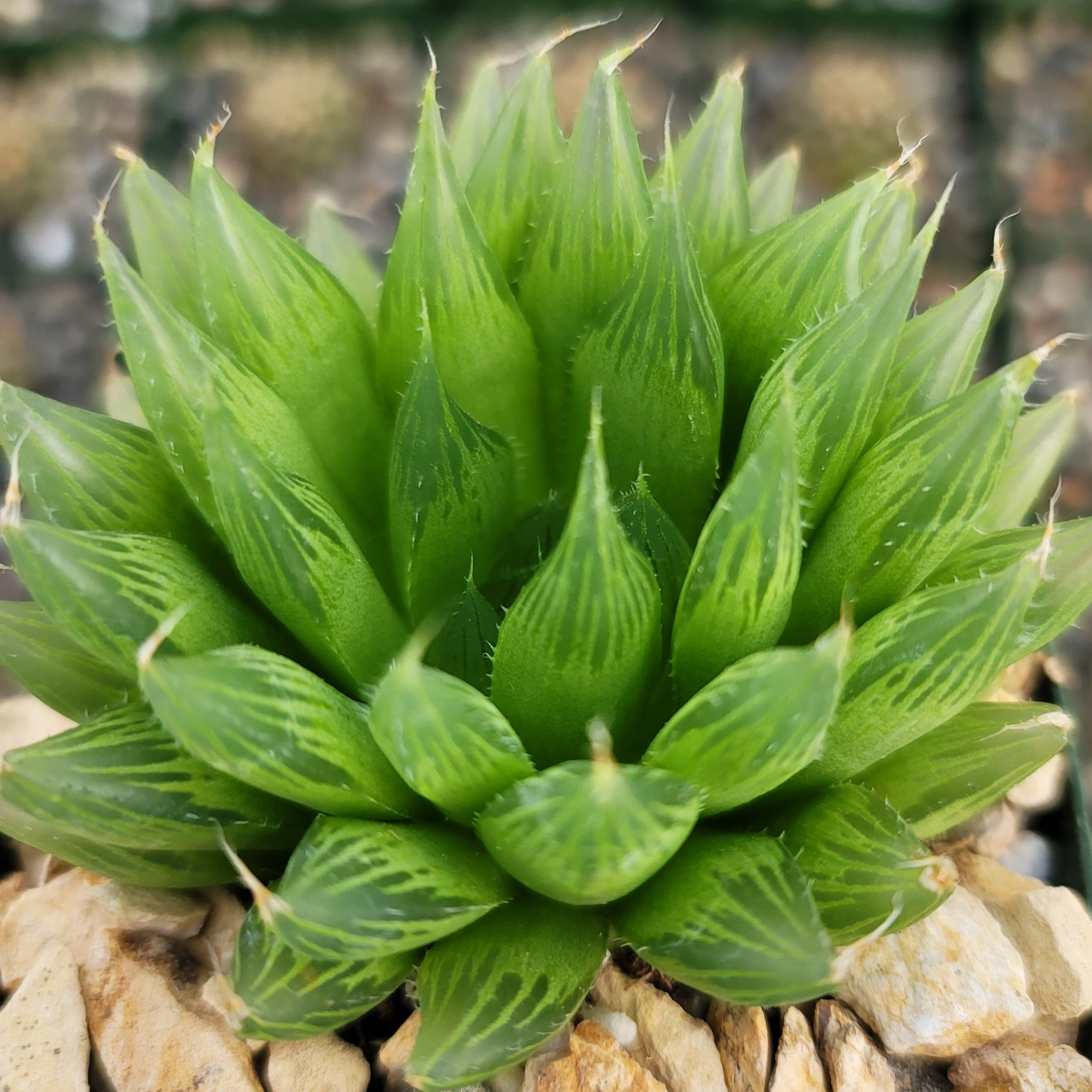All About Cactus – Top 20 Facts About Cacti that You Need to Know!
Updated: April 10, 2025

A Cactus is a flowering plant native to hot, dry areas like deserts, and is known for its thick stem and sharp needle-like points. It lacks leaves and can be grown indoors in pots. Cactus plants have the unique feature of conserving water, allowing them to survive in dry environments. They are part of the Cactaceae family, with nearly 2,000 cactus species.
The term "cacti" is plural for "cactus," while "cactuses" is a plural form of Standard English grammatical rules; however, scientific research favors cacti, but some English speakers incorrectly use cactuses in informal settings. Cacti is the preferred term, as it is what is used globally in the botanical scientific community.
The word "cactus" has an interesting origin. It comes from the Latin word "cactus," which means "spiny plant." This Latin word was derived from the Ancient Greek word "kaktos." So, the term "cactus" has been used for centuries to describe these unique and spiky plants. It's fascinating how the name has endured throughout history!
Below, you'll discover some fascinating cactus facts that will pique your curiosity and expand your knowledge about these remarkable desert plants.

1
Cactus in History: The Spiny Legacy
Cacti have been a part of human history for thousands of years, with evidence of their use dating back to ancient civilizations in the Americas. The Incas, for example, used cacti for medicinal purposes, while the Aztecs revered the prickly pear cactus as a symbol of fertility and prosperity. In ancient Mexico, cacti were also used as a source of food, with the fruits of the Prickly pear cactus being eaten raw or used to make jams and preserves.
One of the most significant events in the history of cacti was their introduction to Europe by Christopher Columbus on his second voyage in 1493. Columbus brought back a specimen of the prickly pear cactus (Opuntia spp.) from the New World, marking the first time that cacti had been seen in Europe. This introduction sparked a fascination with cacti among European botanists and horticulturists, leading to the widespread cultivation and trade of these unique plants.
In addition to their practical uses, cacti also held spiritual significance in many ancient cultures. In ancient Egypt, for example, the cactus was seen as a symbol of eternal life, while in ancient Greece, it was associated with the goddess Aphrodite. The unique and striking appearance of cacti has made them a source of fascination and inspiration for humans throughout history, and their ancient history is a testament to their enduring importance and significance.

2
Cacti are Succulents - But Not All Succulents are Cacti!
Cacti belong to the succulent family, known for their ability to store water. Cacti, with their unique and iconic appearance, are indeed a type of succulent. They possess specialized adaptations such as thick, fleshy stems and spines that help them conserve water and protect themselves from predators. These adaptations enable cacti to thrive in desert regions where rainfall is scarce, and temperatures can be extreme. So, when we talk about cacti, we are actually discussing a specific group of succulents that have evolved to survive in some of the harshest environments on Earth!
In addition to their succulent nature, cacti have some distinctive characteristics that set them apart from other succulents.
One of the most notable features of cacti is their areoles, which are small, specialized structures from which spines, flowers, and new growth emerge. This unique attribute is exclusive to cacti and distinguishes them from other succulent plants.
Furthermore, cacti have an incredible diversity of shapes, sizes, and growth habits, ranging from tiny globular species to towering columnar giants. Their ability to adapt and thrive in various habitats around the world makes cacti a truly remarkable and captivating group of succulents.

3
Cactus Spines are Modified Leaves
When we look at a cactus, those spines that cover its surface are not actually leaves, but rather modified structures that serve similar functions. For example, in the Golden Torch Cactus, the spines have evolved from leaves and have undergone modifications to adapt to the harsh desert environment. These spines have various shapes, sizes, and textures, and they play multiple roles. They help protect the cactus from excessive sunlight, reduce water loss by providing shade, and deter animals from feeding on the plant. It is a fun fact about cactus to see how cacti have evolved these modified leaves into spines, which are essential for their survival in arid conditions. Moreover, the spines offer shade, which reduces evaporation. Even little patches of shade are treasured when you live in the desert, where the sun is cruel. So, next time you admire a cactus and its spines, remember that they are not just ordinary leaves but remarkable adaptations that have helped cacti thrive in their unique environments.

4
Cactus Have Adapted to Live in Hot & Arid Climates
Cacti are well-known for their ability to thrive in hot and arid conditions, thanks to their unique adaptations such as water storage and reduced leaf surface area. However, it might surprise you to learn that there are also cacti species like Echinocereus triglochidiatus (Claret Cup Cactus), that can withstand extreme cold temperatures. These cold-hardy cacti have developed specific adaptations to survive freezing conditions, such as a thick waxy coating on their stems and the ability to tolerate frost. While not all cacti can handle the cold, these resilient species demonstrate that some cacti can embrace both scorching heat and icy cold, making them truly remarkable plants.

5
Some Cacti Can Live for Over 200 Years
Believe it or not, over 1500 species of cacti have an incredibly long lifespan, with some individuals living for well over two centuries! Cacti can live for hundreds of years in their natural habitat. If kept indoors, they could live for many decades with proper care. Here are some cacti with a long cactus lifespan: The Saguaro Cactus (Carnegiea gigantea) and Old Man Cactus (Cephalocereus senilis) are iconic cacti that can live for over 200 years and can develop a unique shaggy appearance. Remember, the lifespan of a cactus can vary depending on its species, growing conditions, and the care provided. These cacti are known for their longevity and can be a great addition to any cactus collection!

6
Saguaro Cactus Facts: The Incredible Secrets of the Giant Cactus
- The interesting fact about the saguaro cactus is that it can live up to 200 years in the wild, making it one of the longest-living cacti species.
- One of the most unique facts about the saguaro is its slow growth rate - it takes a saguaro about 10 years to grow just 1.5 inches in height.
- It takes around 50-70 years for a saguaro to grow its first arm, and it can grow up to 6 arms in its lifetime.
- The saguaro's root system is shallow but extensive, covering up to 100 square feet.
- The saguaro's stems can store up to 200 liters of water, allowing it to survive for long periods without rain. In fact, the saguaro can increase its weight by up to 50% during a single rainfall event, storing water for future use.
- The saguaro's flowers bloom on the tips of its stems, and it produces vibrant red fruits that are an important food source for many desert animals.
- The saguaro is a vital part of the Sonoran Desert ecosystem, providing habitat and food for a variety of animals, including the Gila Woodpecker, which excavates nesting holes in the saguaro's stems.
- The saguaro is also an important cultural symbol, appearing in the artwork and traditions of many Native American tribes in the region.

7
Cacti Come in Different Shapes and Sizes
Cacti can range from small, round globes to tall, columnar cacti. Cacti exhibit a remarkable diversity when it comes to their physical appearance. They really vary in height, from one inch to sixty-five feet. The tallest cactus in the world is the Mexican gigantic Cardon (Pachycereus pringlei), whereas the largest species in the US is the saguaro (Carnegiea gigantea). Some cacti grow tall and columnar, while others sprawl close to the ground. Some have a single stem, while others form clusters or even sprawling mats. The variety of shapes and sizes in the cactus family is truly astounding and adds to the charm and intrigue of these fascinating desert plants. The Golden Barrel Cactus is a barrel-shaped cactus with golden spines, while the Bunny Ear Cactus has flat, oval-shaped pads resembling bunny ears. The Moon Cactus has a globular shape and comes in various colors. The Old Lady Cactus has dense white spines and a fuzzy texture with clumping growth. The Organ Pipe Cactus can reach up to 20 feet in its natural desert habitat but stays smaller indoors with upright stems resembling organ pipes.

8
Cacti Are Native to the Americas
1749 out of 1750 species of cacti are native to only the Americas. Cactus plants are primarily found in North and South America, from deserts to rainforests. Cacti have a rich and storied history in the Americas, with many species originating from various regions across North and South America. These remarkable plants have adapted to thrive in arid and desert-like environments, making them well-suited to the diverse landscapes of the Americas. From the iconic saguaro cactus found in the deserts of the southwestern United States to the prickly pear cactus that dots the landscapes of Mexico and the Caribbean, cacti have become an integral part of the natural heritage of the Americas. Their unique ability to store water in their fleshy stems and withstand extreme temperatures has allowed them to survive and flourish in these challenging environments for centuries. So, the next time you come across a cactus, remember that you're witnessing a piece of the Americas' botanical legacy!

9
Some Cacti Have Edible Pads & fruits
In addition to their natural beauty, cacti have also played a significant role in the cultures and traditions of the Americas. Indigenous peoples have long relied on cacti for food, medicine, and even building materials.
Prickly pear cacti are popular cacti; known for their edible pads and fruits. The pads, also called nopales, are commonly used in Mexican cuisine and are packed with vitamins and minerals. They can be grilled, sautéed, or even added to salads for a unique and delicious flavor.
The fruits, known as prickly pear dragon fruit, are sweet and juicy, often used in jams, jellies, and desserts. Additionally, the prickly pear cactus is a traditional medicine plant known for its anti-inflammatory properties and vitamin C absorption properties. Its edible fruits are rich in antioxidants, and its pads are used to treat digestive issues and reduce inflammation.

10
Cacti are Like Camels and Store a lot of Water to Survive in the Desert
- Cacti are like Camels; they drink up a lot of water quickly and then can go a long time before needing water again.
- Cacti have developed other adaptations to maximize their water retention.
- Many cacti have shallow, widespread root systems that allow them to quickly absorb water from the soil after rainfall. These roots are also capable of absorbing water from fog or dew that settles on the surface of the cactus.
- Cacti have a unique method of conducting photosynthesis called CAM (Crassulacean Acid Metabolism), which allows them to open their stomata at night to minimize water loss through transpiration.
Interesting Fact:
During the day, when temperatures are higher and water loss is more likely, the stomata remain closed, preventing excessive water loss. These adaptations work together to ensure that cacti can efficiently store and utilize water, making them well-adapted to survive in water-scarce environments

11
Cacti Have an Amazing Variety of Flowers
Cacti are not just about their spiky exteriors; they can surprise you with their stunning blooms too. Some cacti produce these vibrant and colorful flowers that just take your breath away. Some cacti flowers only bloom at night, creating a magical sight under the moonlight. These night-blooming cacti, like the Queen of the Night (Selenicereus grandiflorus), have these beautiful, fragrant flowers that last for just one night, making them quite special. On the other hand, there are cacti that have flowers that bloom for several weeks, like the Easter Lily Cactus (Echinopsis oxygona) or Domino cactus (Echinopsis subdenudata), which showcases their vibrant blooms for a longer period. It's incredible how these resilient plants have adapted to different blooming patterns, making each cactus species unique and captivating in its own way.

12
Cacti Are the Easiest Type of Plants to Take Care Of
Another cool cactus fact is that they are known for their ability to thrive in dry and arid conditions, making them perfect for busy individuals or those who may not have a green thumb. Some cacti species, like the Saguaro cactus, can go for long periods, even up to two years, without water. They have adapted to store water in their stems, allowing them to survive in harsh desert environments. Most cacti are resistant to pets, thanks to their sharp spines. This makes them a great choice for households with curious furry friends. Just be sure to keep them out of reach to avoid any accidents. Cacti are known for their ability to withstand tough conditions. They can tolerate extreme temperatures, poor soil quality, and neglect. They are hard to kill, making them a great option for beginner gardeners. Cacti have developed a unique adaptation, a cuticle on their stems and leaves, which acts as a protective barrier against water loss, reducing evaporation, and providing a waterproof seal.
Pro Tip
Watermarks on cacti are real. So, it's essential to water them from the bottom to prevent discoloration and unattractive stains.

13
Cactus Grow Slower Than Most Plants
Growing cacti can indeed be a waiting game, but it's totally worth it. Cacti have a unique growth pattern that requires patience and a little bit of TLC. Cacti's slow growth rate is due to their adaptation to arid environments, which requires them to conserve energy and water for steady growth. Cactus seeds germinate under specific conditions like temperature, moisture, and light, taking weeks or months and requiring patience during this crucial stage. Cactus seed sprouts, develop a root system, takes weeks to months, and requires proper watering and an environment for a strong foundation; proper care is crucial. Consistent care and patience lead to a beautiful, unique cactus plant, with slow growth spurts showcasing dedication and resilience.

14
Cacti Are Not Just from The Desert
It's a total myth that cacti can only be found in the desert. In fact, these prickly beauties can grow in various environments, including mountainous regions and even tropical areas. Some cacti species, like the Rhipsalis and Epiphyllum, are known to thrive in the lush, humid conditions of tropical rainforests. It's pretty amazing how they've adapted to survive in these diverse habitats. In mountainous regions, cacti can be found growing at higher elevations where the climate is cooler and more temperate. They've developed unique characteristics to withstand the cold temperatures and harsh conditions. For example, the Opuntia species, also known as the Prickly Pear, can be found in mountainous areas of North America. These cacti have adapted to the colder climate by growing smaller and more compact, with spines that help protect them from the elements. When it comes to tropical weather, many cactus species have adapted to the humid conditions found in rainforests. The Rhipsalis and Epiphyllum cacti, also known as Jungle Cacti, are excellent examples. These cacti have evolved to grow as epiphytes, meaning they can attach themselves to trees and absorb moisture from the air. Their ability to thrive in the tropical rainforest showcases their adaptability and resilience.
RELATED INFO
Planet Desert Sells over 500 Varieties of Cacti – Shop Now

15
Cacti Come in a Variety of Colors
Cacti are not always green, and they come in a wide variety of colors and textures. Here are three examples of cacti that showcase their vibrant diversity: The Moon cactus (Gymnocalycium mihanovichii), a vibrant grafted cactus, is a popular choice for indoor gardening due to its vibrant hues. It lacks chlorophyll, giving it a green color, but compensates with red, orange, yellow, and pink. The Blue barrel cactus (Ferocactus glaucescens), a hardy and drought-tolerant species, has a blue-gray hue due to a waxy coating on its surface. The Golden barrel cactus (Echinocactus grusonii), native to Mexico, has a striking golden-yellow color and numerous spines. The Blue Torch Cactus (Pilosocereus pachycladus), a mesmerizing plant with a unique blue-green coloration, adds a captivating and serene vibe to any room. These cacti are hardy and drought-tolerant, making them ideal for landscaping. The moon cactus is a popular choice for indoor gardening and adds a pop of color to any space.

16
Cacti Have a Symbolic Meaning in Certain Cultures
- Cacti hold symbolic meanings in various cultures around the world. Here are three examples of how cacti are seen as symbols:
- In Mexican culture, the cactus, particularly the prickly pear cactus, is a powerful symbol of resilience and endurance. It represents strength and the ability to thrive in harsh conditions. The cactus is often associated with the Mexican holiday Día de los Muertos (Day of the Dead), where it is used as a decorative element to honor deceased loved ones.
- In Native American cultures, the saguaro cactus is considered a sacred symbol of protection and sustenance. It is seen as a provider of food, water, and shelter in the desert regions where it grows. The saguaro cactus is highly respected and is often depicted in art and storytelling as a symbol of wisdom, longevity, and the connection between humans and nature.
- In Feng Shui, a Chinese philosophical system, cacti are believed to bring protective energy into a space. They are thought to ward off negative energy and promote harmony and balance. Cacti, with their spiky and resilient nature, are seen as symbols of protection and strength, making them popular choices for home decor.

17
Unveiling the Inactive Season of Cacti
During its inactive season, which typically occurs from October through March, cacti go through a period of dormancy. This is a natural part of their growth cycle and it's important to provide them with the right conditions during this time. To ensure your cactus gets the rest it needs, consider the following factors: sunlight, water, fertilizer, and temperature. Keep the sunlight bright but reduce the water as cacti are adapted to arid environments. Lower the temperature to around 45 degrees Fahrenheit during their dormant phase to mimic their natural habitat conditions. Fertilizer should also be stopped to maintain a healthy balance.

18
Cactus Spines: Serves as Water Collector & Shade Providers
Cacti spines are like nature's little water collectors. When the wind blows, they can actually capture tiny droplets of moisture from the air, helping to hydrate the cactus. But that's not all! The spines also provide shade to the cactus, creating a microclimate that helps slow down evaporation and conserve precious water. So, those spines are not only sharp and stylish, but they play a crucial role in the cactus's survival.

19
Cactus are Only Plants That Have Areoles: Nature’s Multipurpose Bumps
Those small, fuzzy bumps on the cactus's exterior are actually incredibly versatile. From these areoles, flowers, spines, and even branches sprout forth. It's like a botanical superpower. What's fascinating is that each areole produces only one flower in its lifetime, making each bloom even more special. Cactus spines, which are also born from the areoles, serve as a defense mechanism against predators. They come in all shapes and sizes, from tiny hair-like spines to long, intimidating needles. These spines not only protect the cactus from harm but also help to reduce water loss by providing shade and creating a barrier against evaporation. And let's not forget about the branches that sprout from the areoles. These branches play a crucial role in the growth and development of the cactus. They allow the plant to expand its reach, capturing more sunlight and maximizing its chances of survival in harsh desert environments.

20
Preserving Nature’s Treasure: The Threat of Cactus Extinction in the Wild
According to the International Union for Conservation of Nature (IUCN), a staggering 31 percent of cacti species are at risk of extinction. This alarming statistic highlights the urgent need for conservation efforts to protect these remarkable plants and their unique ecosystems.Cacti face numerous threats that contribute to their vulnerability. Habitat loss, caused by urbanization, agriculture, and land development, is one of the primary factors endangering these plants. Climate change and illegal collection for horticultural trade also pose significant risks to their survival. As habitats shrink and become fragmented, cacti struggle to find suitable conditions for growth and reproduction. Some of the cactus species that are at risk of extinction include the Sclerocactus brevispinus, Eriosyce crispa, and Mammillaria pectinifera. These unique and beautiful cacti are facing significant threats to their survival due to habitat loss, climate change, and illegal collection. It's crucial that we take action to protect these endangered species and ensure their long-term survival in the wild. Together, we can make a difference and preserve these incredible plants for future generations to appreciate and admire.
RELATED ARTICLE
If you want to learn more about how to take care of your cactus plants, click here.
Where To Buy Cacti?
Planet Desert has the world's largest selection of cactus, that are available to purchase online and shipped anywhere in the US. You might be able to find them at local nurseries or garden centers in your area that specialize in succulents and cacti.
Here at Planet Desert, we have a large selection of over 500 cacti and succulents in stock and guarantee they will arrive happy and healthy. So, order your favorite cactus now, or just explore all our other cacti on this site. You can also try searching online for "Where to buy a cactus near me’ shops or florists that offer cacti for sale.
Final Thoughts
Overall, Cacti are awesome flowering plants that have adapted to survive in dry environments. They store water in their stems, have spines for protection, and come in various shapes and sizes. Some cacti even produce beautiful flowers! They use a unique type of photosynthesis called CAM and have medicinal properties too. Most Cacti grow slowly, can be found in different habitats, and can withstand extreme temperatures. They're popular as houseplants and have cultural significance. Some parts of cacti are edible, but certain species are endangered. Cacti have a long evolutionary history and can be propagated in different ways. They've captivated the interest of scientists and plant lovers worldwide.























